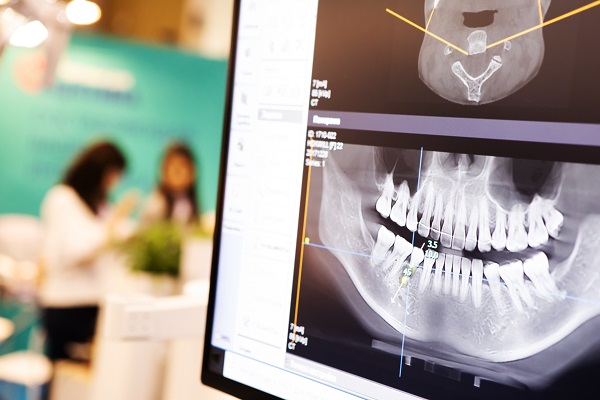Does a Dental Exam Check for Gum Disease?

Dental exams are an important part of visiting a general dentist. The examination portion of the appointment is crucial in catching any warning signs that may indicate problems, such as cavities or gum disease.
In particular, gum disease can be difficult to notice as it may present itself without any major warning signs. With that being said, it is important to never skip dental exams as they allow the general dentist the opportunity to identify these signs and implement a plan to address them.
Checking for gum disease
Below is an overview of gum disease, including how it checked for during a dental exam, as well as what the signs may be. This information can be helpful to review as it gives individuals a chance to prepare for what might be upcoming.
What is involved in a dental exam?
A dental exam in general dentistry involves the patient lying extremely still while each tooth is looked at. From there, both sides of the gums are also carefully inspected. The general dentist may use small tools to perform the exam; however, there is not any pain involved. On average, a dental exam may take anywhere from 15 to 30 minutes.
In addition to the examination of the teeth and gums, the dentist will also take x-rays. X-rays are images taken, which highlight deeper areas of the oral cavity. For example, it shows the bone and roots beneath, which can be helpful when trying to identify an infection or problem area. Not all infections are visible to the naked eye, which is why x-rays do play an important role.
How a general dentist checks for gum disease
Gum disease, in particular, is not examined for the same way that the teeth are looked at. The dentist will use a small dental tool to measure the gum pockets. While the tool does have a sharper end, it is important to know that there will not be any pain. The tool will measure how deep the gum pockets are and determine if they are too deep. From there, the dental examination will also include looking for any warning signs.
Signs to look out for
When thinking that gum disease is a problem, the general dentist will look for a few specific things during the dental exam. Outlined below are a few of the signs.
- Inflammation of the gums
- White or red patches on the gums
- Gaps in between the gum line and the tooth
- Areas of bleeding
- Sensitivity or tenderness
Get scheduled for a dental exam
It is highly recommended to visit a general dentist at least twice a year. This gives them the opportunity to perform a dental exam and cleaning, both of which are necessary in order to maintain good oral health. Additionally, if any warning signs are indicated, a plan of action can be put into place. To find out more about dental exams or gum disease, reach out today.
Request an appointment here: https://www.schommerdental.com or call Schommer Dental at (563) 272-2331 for an appointment in our Davenport office.
Check out what others are saying about our services on Yelp: Dental Exam in Davenport, IA.
Recent Posts
A deep teeth cleaning is not just a procedure needed after skipping dental visits. Instead, a deep teeth cleaning is designed to help combat periodontal disease and gum recession, both of which can lead to irreversible oral health problems. Of course, some individuals who skip routine maintenance from the dentist may need a deep teeth…
Dental cleanings are one of the most important appointments to have on a regular basis. Most people visit their general dentist office for their cleanings because they often line up with their checkup appointments. A general dentist’s office is typically staffed with a hygienist too, the person who performs dental cleanings.Want to know more about…
If you have not had a professional dental cleaning in Davenport lately, it is time for you to visit our dental office office. Clean teeth and gums keep your smile bright and your mouth healthy. Continue reading for more reasons you should visit for a cleaning today.Even with regular brushing and flossing, plaque (a whitish-yellow…
Regular preventative dental care is important. It can help you get an early diagnosis of potential cavities, so you can focus on giving those areas more attention. Regular dental cleanings can help remove plaque so there is not the chance of hardened plaque buildup occurring. Preventative dental care from a trusted dentist can save you…


